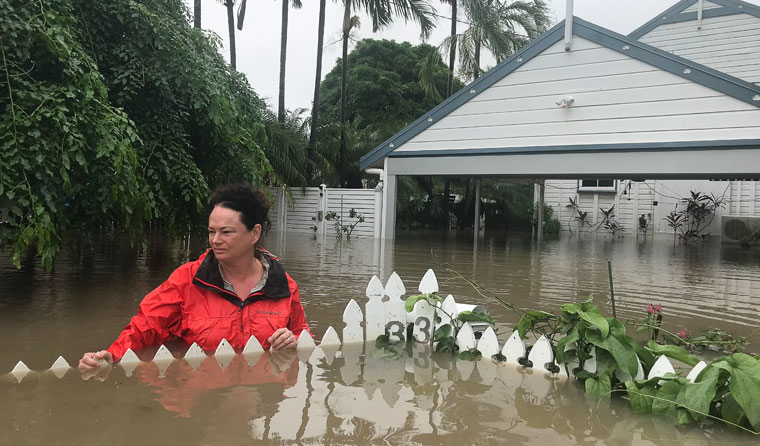News
Localised disaster planning key to tackling ‘scary’ season ahead
GPs and Primary Health Networks are bracing for a major natural disaster season, with fires likely to follow the drought.
 The Blue Mountains fires in 2013 were a wake-up call for local GPs and PHNs. (Image: Dan Himbrechts)
The Blue Mountains fires in 2013 were a wake-up call for local GPs and PHNs. (Image: Dan Himbrechts)
Localised response pathways are one method Primary Health Networks (PHNs) are using to help GPs and practices prepare ahead of what many believe will be a big disaster season.
‘This season looks really scary. We need to get that message out to GPs as well as communities,’ disaster medicine specialist and GP Dr Penny Burns told newsGP.
‘There is a high level of risk this season. The first fires are coming now, ahead of a high-risk season. We’re expecting heatwaves with higher-than-expected temperatures, compounded with drought and increased particulate matter from bushfire smoke and dust storms.
‘Our message is: be ready and think about these events before they arrive.’
Bushfire risk is shaping up as a major concern, with prolonged drought gripping most of New South Wales and large parts of Queensland, major rivers drying up and towns running out of water to fight fires.
Two people died in bushfires in NSW’s northern rivers region earlier this week.
Cyclones will pose a threat further north, while major floods like this year’s Townsville disaster are also possible. The resurgence of infectious diseases like measles also adds to the issues of which GPs will need to be aware.
The Nepean Blue Mountains PHN is among those developing their own localised resources, focusing on the disasters most likely to affect their area – such as bushfire in the densely forested Blue Mountains, flooding in the Hawkesbury River, and the impact of drought in Lithgow.
Many PHNs are turning to the New Zealand innovation of HealthPathways, localised online manuals used by doctors to assess, manage and refer, as the tool also suitable for disaster planning.
GP Dr Alexandra Williams is the Nepean Blue Mountains PHN senior clinical editor working on localising pathways.
‘The great thing about this is that our suite of disaster pathways can be adapted by regions all around Australia,’ she told newsGP.
‘Many have already rolled out around Australia over the last five years, and the aim is that most regions will have it in the next few years.
‘We’ve written these pathways so GPs and patients are ready to respond. We know vulnerable sections of the population are particularly prone to health issues during disasters, so hopefully we can reduce the impact on them.
‘Older people, people with chronic health conditions, people with respiratory or cardiovascular conditions, women with young children, people with disabilities and people with dementia are the main groups at risk.’

Major floods like this year’s Townsville disaster are also possible over the coming months. (Image: Andrew Rankin)
One of the pathways is designed as a go-to document in the event of disasters, ranging from where to help at evacuation centres, key phone numbers, lists of necessary onsite items, and what to do if the power goes out.
Another focuses on the post-disaster health conditions GPs are likely to see.
‘That covers the physical conditions GPs might come across after an event, like the [deadly] fungus after the floods in Townsville, as well as responses to mental health conditions,’ Dr Williams said.
The move by the PHN comes after the worst fires in 50 years ripped through the region in 2013, burning 160,000 acres and destroying more than 200 homes.
‘The PHN was very involved in the 2013 NSW bushfires, and has learned lots of lessons which led to planning for disaster management,’ Dr Burns said.
In the aftermath of the 2013 fires, Dr Burns remembers many GPs approaching her asking for what they should be on the lookout. Would they see a long tail of mental health issues? Would people be at heightened risk of cardiovascular events?
Dr Burns, who was also involved in the development of the pathways, said the goal is to walk GPs through the most likely scenarios from a logistics and clinical point of view.
‘It’s about what conditions you might need to prep for, what to do when it hits, and what you’ll see in the aftermath,’ she said.
Login below to join the conversation.
bushfires disaster management natural disasters primary health networks
newsGP weekly poll
How often do patients ask you about weight-loss medications such as semaglutide or tirzepatide?